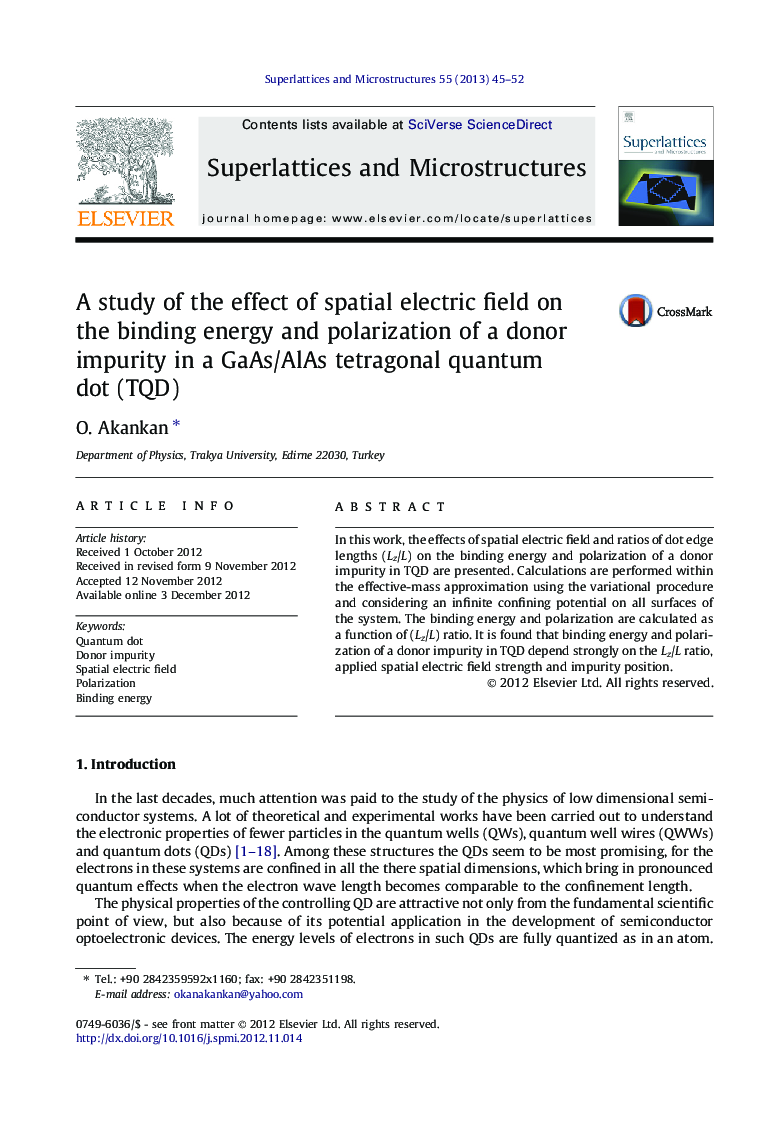| Article ID | Journal | Published Year | Pages | File Type |
|---|---|---|---|---|
| 1553834 | Superlattices and Microstructures | 2013 | 8 Pages |
In this work, the effects of spatial electric field and ratios of dot edge lengths (Lz/L) on the binding energy and polarization of a donor impurity in TQD are presented. Calculations are performed within the effective-mass approximation using the variational procedure and considering an infinite confining potential on all surfaces of the system. The binding energy and polarization are calculated as a function of (Lz/L) ratio. It is found that binding energy and polarization of a donor impurity in TQD depend strongly on the Lz/L ratio, applied spatial electric field strength and impurity position.
Graphical abstractThe difference of the polarization in TQD is presented as a function of Lz/L ratio for different values of electric field strength and impurity position.Figure optionsDownload full-size imageDownload as PowerPoint slideHighlights► The binding energy and polarization of a donor impurity are investigated. ► Calculations are performed in GaAs/AlAs tetragonal quantum dot. ► Binding energy and polarization of a donor impurity in TQD are discussed.
